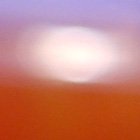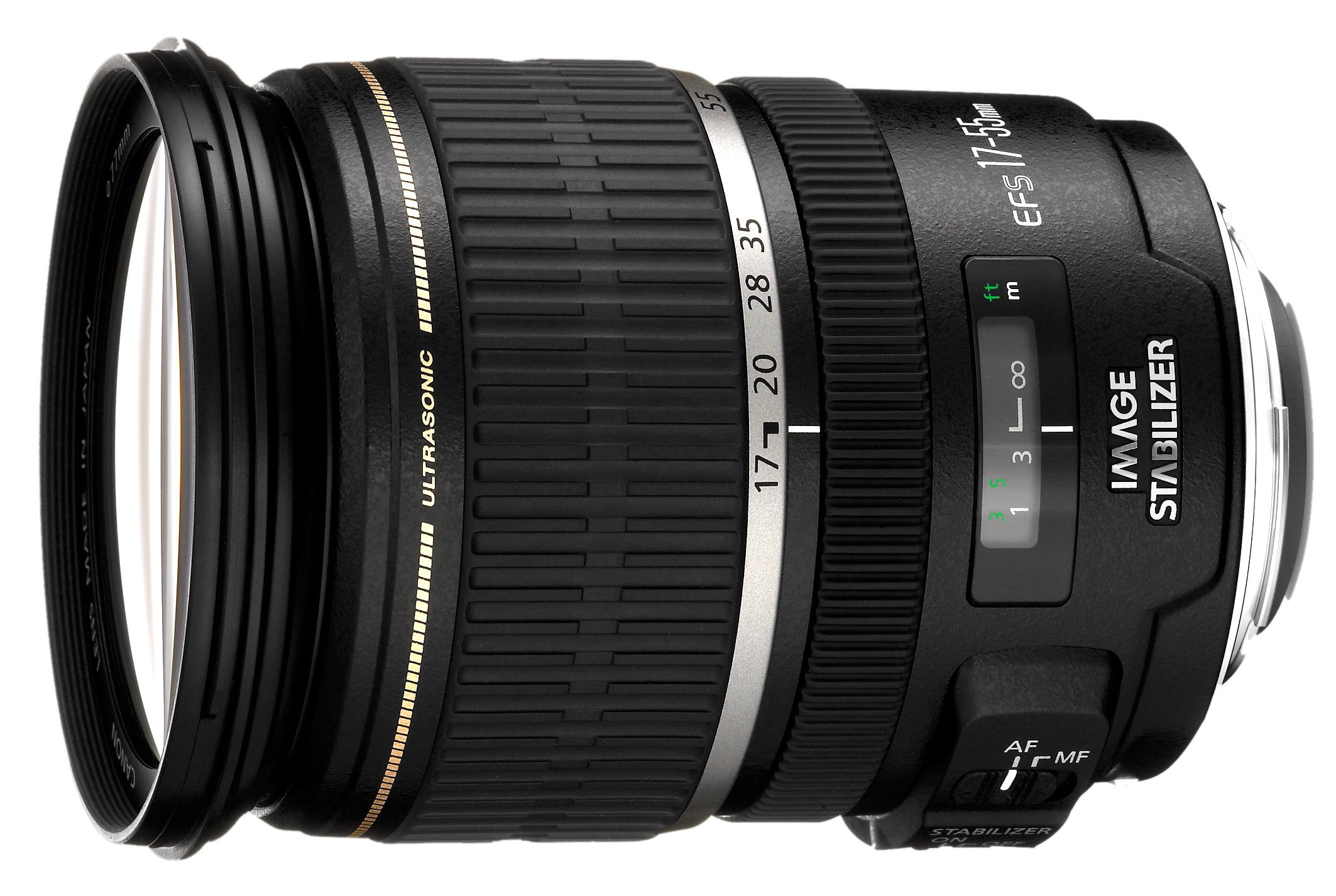
Canon EF-S 17-55mm f/2.8 IS USM
-
-
Written by Gordon Laing
Quality
Pictured below from left to right are the Canon 17-55mm, 17-85mm and 18-55mm EF-S lenses, each zoomed-out to their widest focal lengths. With a diameter of 84mm and shortest length of 111mm, the 17-55mm is by far the largest of the three lenses here, and at 645g, the heaviest too. The 17-85mm and 18-55mm measure 78x92mm and 69x66mm, and weigh 475g and 190g respectively.
The larger size and weight of the 17-55mm is of course down to its bright constant f2.8 aperture, compared to the slower optics of the other lenses here. These barrel sizes are unsurprisingly reflected in their respective filter threads, which from left to right are 77, 67 and 58mm. Lens hoods and carrying pouches are available for the 17-55 and 17-85mm as optional extras, although not including them seems a little mean, especially considering the price of the 17-55mm. Hoods and pouches comes as standard with Canon’s L models.
Pictured below are each lens zoomed-in to their longest focal lengths. Here the 17-55 and 17-85mm models both extend by 26mm, although the former does so with a single barrel, while the 18-55mm extends by 9mm. Clearly the 17-55mm remains the largest of the group.
Canon 17-55mm build quality and focusing
The exterior design and build quality of the 17-55mm and 17-85mm are very similar, although the additional weight of the former lends it an air of greater confidence. Both are considerably superior to the build quality of kit 18-55mm lens, but remain below that of Canon’s L range of standard zooms. So while the 17-55mm f2.8 may comfortably be the most expensive EF-S lens yet, this range has not achieved L status so far – in terms of build anyway.
In terms of focusing, the USM motors of the 17-55 and 17-85mm are both much quicker and quieter than the budget 18-55mm. Both also employ internal focusing, whereas the 18-55mm rotates its front portion while focusing which will infuriate users of polarising filters.
Compared side by side with the 400D / Rebel XTi under normal conditions, the 17-55 and 17-85mm focusing speeds are virtually identical, although we’d say the former enjoys a very slight edge. Place both in dim light conditions though and the brighter aperture of the 17-55mm gives it a noticeable advantage over the 17-85mm. The former snaps into focus with ease, while the latter can search a little under darker conditions.
Canon 17-55mm coverage, wide angle
To compare actual coverage we shot the same scene with the 17-55mm, 17-85mm and 18-55mm lenses within a few moments of each other using an EOS 400D / Rebel XTi; the camera was mounted on a tripod to ensure a consistent position. Here the lenses were set to their widest focal lengths.
With all three images opened alongside each other in Photoshop, the 17-55mm captures a fractionally wider field than the 18-55mm as expected, although interestingly the 17-85mm squeezes noticeably more still; this is apparent even on our shrunken examples below, where the 17-85mm sample is pictured in the middle. Our Canon 17-85mm review also showed it capturing a slightly wider field than the 17-40mm L model.
Canon EF-S 17-55mm f/2.8 IS USM | Canon EF-S 17-85mm f/4-5.6 IS USM | Canon EF-S 18-55mm f/3.5-5.6 | ||
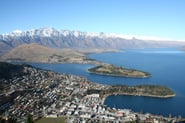 17-55mm at 17mm (27mm equivalent) | 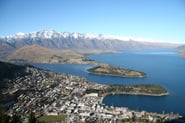 17-85mm at 17mm (27mm equivalent) | 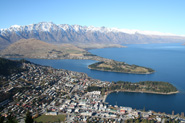 18-55mm at 18mm (29mm equivalent) | ||
Canon 17-55mm coverage, telephoto
Next up came the telephoto-end of each lens. Again to compare actual coverage we shot the same scene with the 17-55mm, 17-85mm and 18-55mm lenses within a few moments of each other using an EOS 400D / Rebel XTi; the camera was mounted on a tripod to ensure a consistent position. Here the lenses were set to their longest focal lengths.
Here the longer reach of the 17-85mm is clear, and gives it greater compositional versatility than the pair which top-out at 55mm. As for them, the 17-55mm delivered a fractionally tighter field than the 18-55mm when zoomed-into 55mm, although it was extremely close.
Canon EF-S 17-55mm f/2.8 IS USM | Canon EF-S 17-85mm f/4-5.6 IS USM | Canon EF-S 18-55mm f/3.5-5.6 | ||
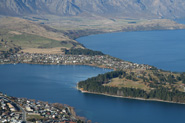 17-55mm at 55mm (88mm equivalent) | 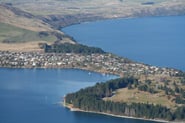 17-85mm at 85mm (136mm equivalent) | 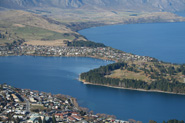 18-55mm at 55mm (88mm equivalent) | ||
Canon 17-55mm Image Stabilisation
After the bright constant f2.8 aperture, the big selling point of the new 17-55mm lens is its Image Stabilisation facilities. Like the 17-85mm before it, Canon claims up to three stops of compensation, which should allow you to use shutter speeds up to eight times slower than before. For example, if the slowest exposure you could confidently handhold at a certain focal length was, say, 1/60 of a second, three stops of compensation should enable you to enjoy the same result at 1/8 (or more accurately, 1/7.5).
This clearly allows you to shoot under much lower light conditions without needing a tripod, or increasing the sensitivity and compromising noise levels as a result. The 17-55mm’s bright f2.8 aperture helps even more in this regard, making it an excellent lens for anyone who works in low light.
Like other Canon wide zooms with IS, there’s only one mode available with a switch on the side of the lens to switch it on or off. The system kicks in with a faint click when you depress the shutter halfway and stays on for a few seconds before deactivating to save power.
To test its effectiveness we shot the same macro scene zoomed-into 55mm with and without IS enabled; this was working at an effective focal length of 88mm.
Below are two examples of a handheld macro composition taken with and without IS, using a very slow shutter speed of half a second. We’ve cropped the original images to 1728×1152, thereby showing around one quarter of the original, then reduced them to 282×188 pixels for reproduction here. Viewed at 100%, the shot with IS is perfectly sharp.
Canon EF-S 17-55mm f/2.8 IS USM without IS | Canon EF-S 17-55mm f/2.8 IS USM with IS | |
 |  | |
| Canon EF-S 17-55mm at 55mm (88mm equivalent). IS disabled. 100 ISO, 0.5 second, f14 | Canon EF-S 17-55mm at 55mm (88mm equivalent). IS enabled. 100 ISO, 0.5 second, f14 |
As with all anti-shake systems, the effectiveness of IS varies between photographers and the particular shooting conditions, but its benefits are still clear. And coupled with the 17-55mm’s f2.8 aperture you can now shoot under conditions you’d previously consider impossible. For example with the lens at 17mm and the 350D / Rebel XT set to 1600 ISO we managed to shoot sharp portraits at f2.8 in a very dark bar environment using exposures as long as one second. This was only possible with the image stabilisation and f2.8 aperture of the lens – along with subjects who kept very still of course!
Canon 17-55mm with built-in popup flash
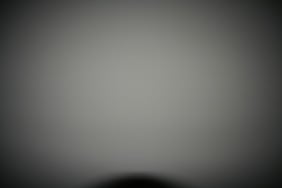
Canon EF-S 17-55mm at 17mm (27mm equivalent). 100 ISO, 1/60 second, f2.8, popup flash
A quick note to anyone intending to use the 17-55mm lens with their camera’s built-in flash.Like other larger-barrelled lenses, the EF-S 17-55mm will cast a shadow from the popup flash of the 400D or 350D / Rebel XTi or XT when zoomed-out to 17mm. This shadow can be seen as the small arch at the bottom of the image on the left.
This can be avoided by zooming-in slightly, or of course by using an external Speedlite flashgun.
It should be noted though, the slightly smaller barrel of the EF-S 17-85mm lens avoids this problem.
Outdoor scene: Canon EF-S 18-55mm vs 17-85mm vs 17-55mm vs EF 17-40mm with Canon 400D / XTi
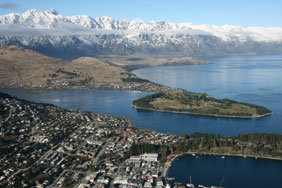 To compare real-life performance we shot the same scene with the Canon EF-S 18-55mm, EF-S 17-85mm, EF-S 17-55mm and EF 17-40mm lenses, all set to a focal length of 25mm and an aperture of f8. Each lens was mounted on a Canon EOS 400D / XTi set to 100 ISO and using its best quality JPEG settings. All images were taken within moments of each other.
To compare real-life performance we shot the same scene with the Canon EF-S 18-55mm, EF-S 17-85mm, EF-S 17-55mm and EF 17-40mm lenses, all set to a focal length of 25mm and an aperture of f8. Each lens was mounted on a Canon EOS 400D / XTi set to 100 ISO and using its best quality JPEG settings. All images were taken within moments of each other.The image left was taken with the Canon EF-S 17-55mm at 25mm f8, with a sensitivity of 100 ISO; the original Large Fine JPEG measured 4.17MB. The crops are taken from the upper left, centre and lower right portions of the originals and presented here for evaluation at 100%.
Moving onto the middle row of crops from the center of the image and all four lenses perform similarly, although the EF-S 17-55mm appears to have slightly higher contrast than the other two EF-S models.The high contrast areas in the upper row of crops have resulted in coloured fringing on all four lenses, although the EF-S 17-55mm also suffers from a higher degree of softness in the extreme corners. This situation greatly improves when you move in even just a little though.
In the final row of crops taken from the bottom right corner of the image, the EF-S 17-55mm once again exhibits some softness, although not as much as the EF-S 17-85mm. Unsurprisingly the EF 17-40mm performs well here, although despite being corrected for full-frame bodies it’s certainly not leaps ahead of the others – and the EF-S 18-55mm kit lens also turns out a good result. For a complete picture of how the lenses compare under other conditions and in other respects though, be sure to check our other results pages, linked below.
Canon EF-S 18-55mm f/3.5-5.6 Using Canon 400D / XTi | Canon EF-S 17-85mm f/4-5.6 Using Canon 400D / XTi | Canon EF-S 17-55mm f/2.8 Using Canon 400D / XTi | Canon EF 17-40mm f/4 Using Canon 400D / XTi | |||
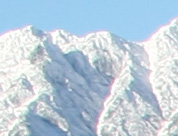 | 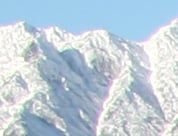 | 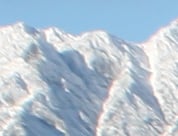 | 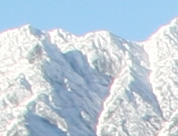 | |||
1/250, f8, 100 ISO | 1/250, f8, 100 ISO | 1/250, f8, 100 ISO | 1/250, f8, 100 ISO | |||
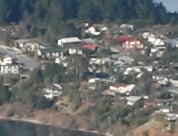 | 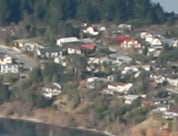 | 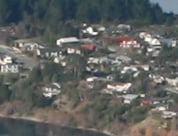 | 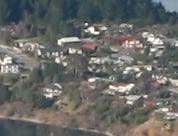 | |||
1/250, f8, 100 ISO | 1/250, f8, 100 ISO | 1/250, f8, 100 ISO | 1/250, f8, 100 ISO | |||
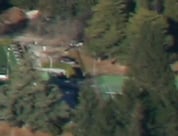 | 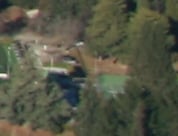 | 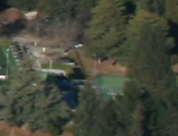 | 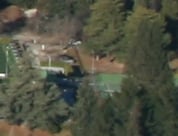 | |||
1/250, f8, 100 ISO | 1/250, f8, 100 ISO | 1/250, f8, 100 ISO | 1/250, f8, 100 ISO |
Canon EF-S 17-55mm f/2.8 IS USM resolution using Canon EOS-400D / XTi
The crops are taken from the original images, saved as High Quality JPEGs in Photoshop CS2 and presented here at 100%. Each number represents 100 lines per picture height (lpph), so a figure of 20 means a resolution of 2000 lpph.
| With 2050 and 2100 lpph of horizontal and vertical resolution respectively, the Canon EF-S 17-55mm falls slightly short of the results delivered by the EF-S 17-85mm and EF 17-40mm L lenses in this studio chart test. This may at first seem slightly disappointing, but as you’ll see over the following pages, the EF-S 17-55mm excels in other areas, including impressive corner sharpness performance, even with its aperture wide open. |
Canon EF-S 17-55mm f/2.8 IS USM | Canon EF-S 17-85mm f/4-5.6 IS USM | |
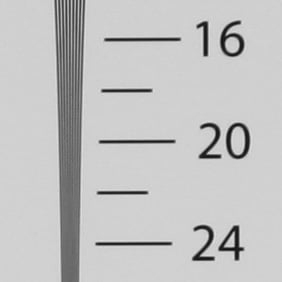 | 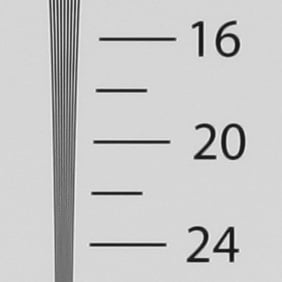 | |
2050 lpph, 17-55mm at 35mm, f8, 100 ISO | 2150 lpph, 17-85mm at 35mm, f8, 100 ISO | |
Canon EF-S 18-55mm f/3.5-5.6 | Canon EF 17-40mm f/4.0L USM | |
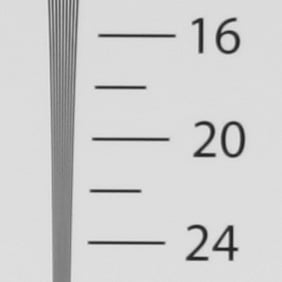 | 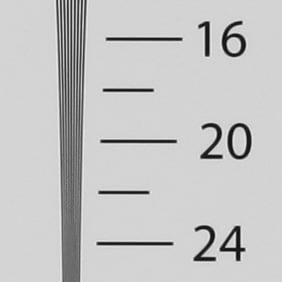 | |
2000 lpph, 18-55mm at 35mm, f8, 100 ISO | 2150 lpph, 17-40mm at 35mm, f8, 100 ISO |
Canon EF-S 17-55mm f/2.8 IS USM | Canon EF-S 17-85mm f/4-5.6 IS USM | |
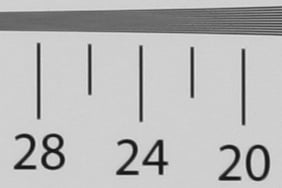 |  | |
2100 lpph, 17-55mm at 35mm, f8, 100 ISO | 2150 lpph, 17-85mm at 35mm, f8, 100 ISO | |
Canon EF-S 18-55mm f/3.5-5.6 | Canon EF 17-40mm f/4.0L USM | |
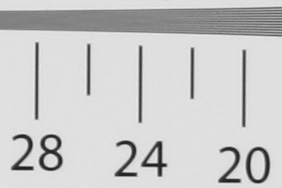 | 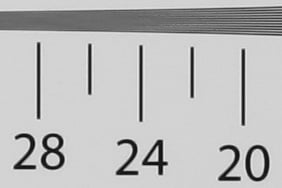 | |
2100 lpph, 18-55mm at 35mm, f8, 100 ISO | 2150 lpph, 17-40mm at 35mm, f8, 100 ISO |
Canon EF-S 17-55mm f/2.8 IS USM corner sharpness comparison
To measure and compare the Canon 17-55mm’s corner sharpness we photographed the Enhanced Digital Camera Resolution Chart with it and a number of lenses using a Canon EOS-400D / XTi. The 400D / XTi was set to Large Fine JPEG mode and Parameter 1.Each lens was tested at its widest and longest focal lengths and with various apertures using Aperture Priority mode. The crops are taken from the lower left corner of the chart and presented here at 100%. The wide angle crops show a slightly larger area of the chart because the minimum focusing distances forced us to shoot from a little further away. No crops have been resized.Zoomed-into 55mm, the 17-55mm f/2.8 lens again performs very well, showing only slight softness in the corners with the aperture wide open and sharpening up nicely as the aperture’s closed. The EF-S 17-85mm also performs well once zoomed-in, even with its aperture wide open, although interestingly the EF 17-40mm L is slightly soft in the corners at 40mm with its widest aperture. Note the lower contrast of the budget EF-S 18-55mm lens at 55mm with its wider apertures.Zoomed-out to 17mm, the EF-S 17-55mm f/2.8 lens performs well in the corners, delivering good results even with the aperture wide open. Once stopped to f4, it comfortably out-performs the EF-S 17-85mm and EF-S 18-55mm in the corners when they’re wide open, and delivers similar results to the EF 17-40mm L lens throughout its aperture range. The EF-S 17-85mm exhibits quite noticeable colour fringing in comparison.
Canon EF-S 17-55mm f/2.8 IS USM | Canon EF-S 17-85mm f/4-5.6 IS USM | Canon EF-S 18-55mm f/3.5-5.6 | Canon EF 17-40mm f/4.0L USM | |||
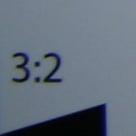 |  |  |  | |||
17-55mm EF-S at 17mm f2.8 | f2.8 not available | f2.8 not available | f2.8 not available | |||
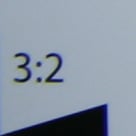 | 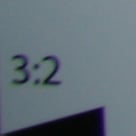 | 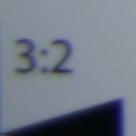 | 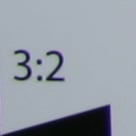 | |||
17-55mm EF-S at 17mm f4 | 17-85mm EF-S at 17mm f4 | 18-55mm EF-S at 18mm f3.5 | 17-40mm EF L at 17mm f4 | |||
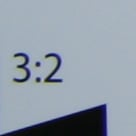 | 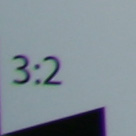 | 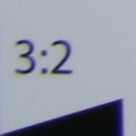 | 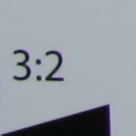 | |||
17-55mm EF-S at 17mm f8 | 17-85mm EF-S at 17mm f8 | 18-55mm EF-S at 18mm f8 | 17-40mm EF L at 17mm f8 | |||
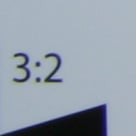 | 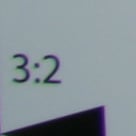 | 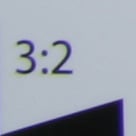 | 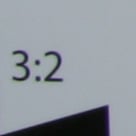 | |||
17-55mm EF-S at 17mm f16 | 17-85mm EF-S at 17mm f16 | 18-55mm EF-S at 18mm at f16 | 17-40mm EF L at 17mm f16 | |||
Canon EF-S 17-55mm f/2.8 IS USM | Canon EF-S 17-85mm f/4-5.6 IS USM | Canon EF-S 18-55mm f/3.5-5.6 | Canon EF 17-40mm f/4.0L USM | |||
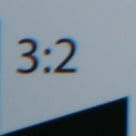 |  |  |  | |||
17-55mm EF-S at 55mm f2.8 | f2.8 not available | f2.8 not available | f2.8 not available | |||
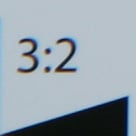 | 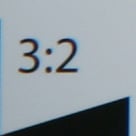 | 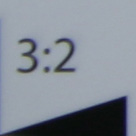 | 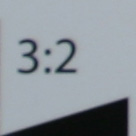 | |||
17-55mm EF-S at 55mm f5.6 | 17-85mm EF-S at 85mm f5.6 | 18-55mm EF-S at 55mm f5-6 | 17-40mm EF L at 40mm f4 | |||
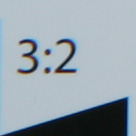 | 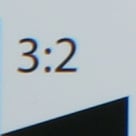 | 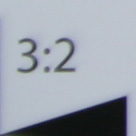 | 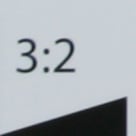 | |||
17-55mm EF-S at 55mm f8 | 17-85mm EF-S at 85mm f8 | 18-55mm EF-S at 55mm f8 | 17-40mm EF L at 40mm f8 | |||
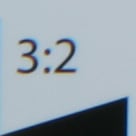 | 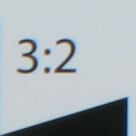 | 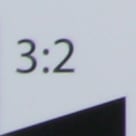 | 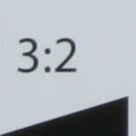 | |||
17-55mm EF-S at 55mm f16 | 17-85mm EF-S at 85mm f16 | 18-55mm EF-S at 55mm f16 | 17-40mm EF L at 40mm f16 |
Canon EF-S 17-55mm f/2.8 IS USM purple fringing comparison
We tested each lens at its widest and longest focal lengths with the aperture wide open. The crops are taken from the upper left corner of the chart and presented here at 100%.To measure and compare the Canon 17-55mm’s purple fringing caused by lens chromatic aberrations and sensor blooming, we photographed a test chart with areas of very high contrast using it and a number of rival lenses.
The Canon EF-S 17-55mm exhibits a little purple fringing at its widest position in line with the others. Fringing is virtually absent at the long end, again in line with the other three.
Canon EF-S 17-55mm f/2.8 IS USM | Canon EF-S 17-85mm f/4-5.6 IS USM | Canon EF-S 18-55mm f/3.5-5.6 | Canon EF 17-40mm f/4.0L USM |
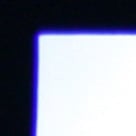 | 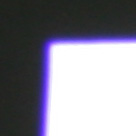 | 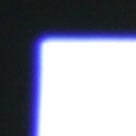 | 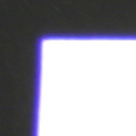 |
17-55mm EF-S at 17mm f2.8 | 17-85mm EF-S at 17mm f4.0 | 18-55mm EF-S at 18mm f3.5 | 17-40mm EF L at 17mm f4 |
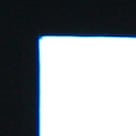 | 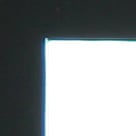 | 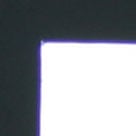 | 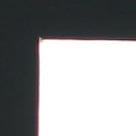 |
17-55mm EF-S at 55mm f2.8 | 17-85mm EF-S at 85mm f5.6 | 18-55mm EF-S at 55mm f5.6 | 17-40mm EF L at 40mm f4 |
Canon EF-S 17-55mm f/2.8 IS USM macro comparison
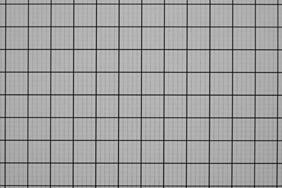 |
| 17-55mm EF-S at 55mm f8 Max area of 124x82mm |
The dark lines are 10mm apart and the result is not cropped. Smaller areas are preferred in this test.To measure and compare the Canon 17-55mm’s macro performance we photographed a chart using it and a number of rival lenses at a focal length and distance which delivered the maximum possible reproduction.
The image left was taken with the Canon 17-55mm zoomed-into 55mm where it captured an area measuring 124x82mm. This is a larger area than the other three lenses on test, and proves there’s better choices if macro’s your thing.
Canon EF-S 17-85mm f/4-5.6 IS USM | Canon EF-S 18-55mm f/3.5-5.6 | Canon EF 17-40mm f/4.0L USM |
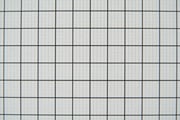 | 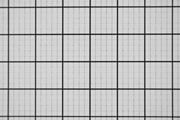 |  |
| 17-85mm EF-S at 85mm f8 Max area of 104x70mm | 18-55mm EF-S at 55mm f8 Max area of 66x44mm | 17-40mm EF L at 40mm f8 Max area of 92x62mm |
Canon EF-S 17-55mm f/2.8 IS USM wide-angle geometry comparison
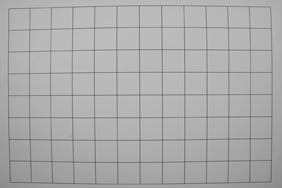 |
| 17-55mm EF-S at 17mm f8 Distortion: 2.87% barrel |
The lenses were tested at their widest focal lengths with an aperture of f8 in Aperture Priority mode.To measure and compare the Canon 17-55mm’s geometric distortion we photographed a test chart consisting of a grid pattern, using it and a number of rival lenses.
The images were analysed with Imatest using 5th Order line calculation and the full areas presented here at a reduced resolution.
The image above was taken with the Canon EF-S 17-55mm at 17mm f8. Barrel distortion was measured at 2.87% which is well below the other EF-S lenses on test and roughly the same as the EF 17-40mm L – this is impressive considering the latter is designed for a full-frame body, so should perform impeccably on an EF-S body.
Canon EF-S 17-85mm f/4-5.6 IS USM | Canon EF-S 18-55mm f/3.5-5.6 | Canon EF 17-40mm f/4.0L USM | ||
 | 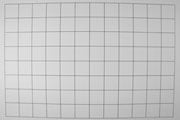 | 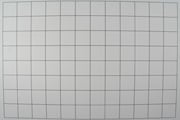 | ||
| 17-85mm EF-S at 17mm f8 Distortion: 5.71% barrel | 18-55mm EF-S at 18mm f8 Distortion: 3.35% barrel | 17-40mm EF L at 17mm f8 Distortion: 2.9% barrel |
Canon EF-S 17-55mm f/2.8 IS USM telephoto geometry comparison
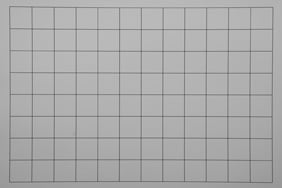 |
| 17-55mm EF-S at 55mm f8 Distortion: 1.09% pincushion |
The lenses were tested at their longest focal lengths with an aperture of f8 in Aperture Priority mode.To measure and compare the Canon 17-55mm’s geometric distortion we photographed a test chart consisting of a grid pattern, using it and a number of rival lenses.
The images were analysed with Imatest using 5th Order line calculation and the full areas presented here at a reduced resolution.
The image above was taken with the Canon EF-S 17-55mm at 55mm f8. Pincushion distortion was measured at 1.09% which is roughly similar to the EF-S 17-85mm lens, albeit not as good as the budget EF-S 18-55mm, nor, unsurprisingly, the EF 17-40mm.
Canon EF-S 17-55mm f/2.8 IS USM wide-angle uniformity comparison
Canon EF-S 17-85mm f/4-5.6 IS USM | Canon EF-S 18-55mm f/3.5-5.6 | Canon EF 17-40mm f/4.0L USM | ||
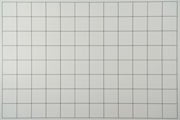 | 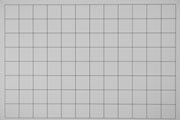 | 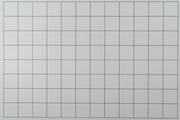 | ||
| 17-85mm EF-S at 85mm f8 Distortion: 0.967% pincushion | 18-55mm EF-S at 55mm f8 Distortion: 0.389% pincushion | 17-40mm EF L at 40mm f8 Distortion: 0.187% pincushion |
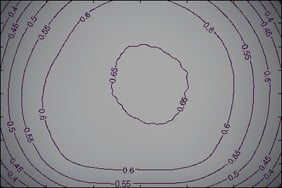 |
| 17-55mm EF-S at 17mm f2.8 Mean corner fall-off: 46.8% |
The lenses were tested at their widest focal lengths with the aperture wide open in Aperture Priority mode.To measure and compare the Canon 17-55mm’s vignetting and light fall-off we photographed a white target with a highly diffused custom filter using it and a number of rival lenses.
The images were analysed with Imatest and the full areas presented here at a reduced resolution. Bigger percentages are better.
The image above was taken with the Canon EF-S 17-55mm lens at 17mm f2.8. Here the light falls off in the corners to an average of 46.8% of the center measurement, which while worse than the other three lenses on test, is not unexpected for a lens with a much brighter focal ratio. Note the EF 17-40mm lens performs best here, but it is an f4 L model, and crucially, is designed for use with a full frame sensor.
Canon EF-S 17-85mm f/4-5.6 IS USM | Canon EF-S 18-55mm f/3.5-5.6 | Canon EF 17-40mm f/4.0L USM | ||
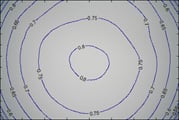 | 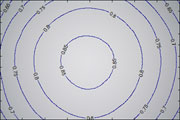 | 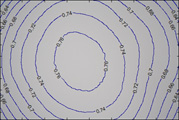 | ||
| 17-85mm EF-S at 17mm f4 Mean corner fall-off: 57.8% | 18-55mm EF-S at 18mm f3.5 Mean corner fall-off: 68.8% | 17-40mm EF L at 17mm f4 Mean corner fall-off: 79.4% |
Canon EF-S 17-55mm f/2.8 IS USM telephoto uniformity comparison
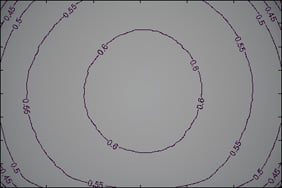 |
| 17-55mm EF-S at 55mm f2.8 Mean corner fall-off: 60.8% |
The lenses were tested at their longest focal lengths with the aperture wide open in Aperture Priority mode.To measure and compare the Canon 17-55mm’s vignetting and light fall-off we photographed a white target with a highly diffused custom filter using it and a number of rival lenses.
The images were analysed with Imatest and the full areas presented here at a reduced resolution. Bigger percentages are better.
The image above was taken with the Canon EF-S 17-55mm lens at 55mm f2.8. Here the light falls off in the corners to an average of 60.8% of the center measurement, which again is noticeably worse than the other three lenses on test. As explained above though, this is not unexpected for a lens with a much brighter focal ratio.
Canon 17-55mm gallery, taken with Canon EOS 350D / Rebel XT
Canon EF-S 17-85mm f/4-5.6 IS USM | Canon EF-S 18-55mm f/3.5-5.6 | Canon EF 17-40mm f/4.0L USM | ||
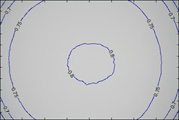 | 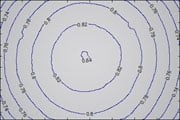 | 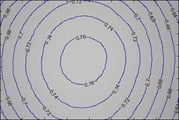 | ||
| 17-85mm EF-S at 85mm f5.6 Mean corner fall-off: 77.5% | 18-55mm EF-S at 55mm f5.6 Mean corner fall-off: 83.8% | 17-40mm EF L at 40mm f4 Mean corner fall-off: 82.2% |
The following images were taken with the EF-S 17-55mm f/2.8 IS USM lens using a Canon EOS 350D / Rebel XT digital SLR. Each image was recorded using the 350D / Rebel XT set to Evaluative metering, Large Fine JPEG mode and Parameter 1. The individual file size, exposure mode, shutter speed, aperture, ISO and lens details are listed for each image.
The crops are taken from the original files, reproduced at 100% and saved in Adobe Photoshop CS2 as JPEGs with the Very High quality preset, while the resized full images were made in Photoshop CS2 and saved with the High quality preset. The three crops are typically taken from far left, central and far right portions of each image.
Landscape: 3.52MB, Program, 1/250, f8, ISO 100, 17-55mm at 21mm (equivalent to 34mm)
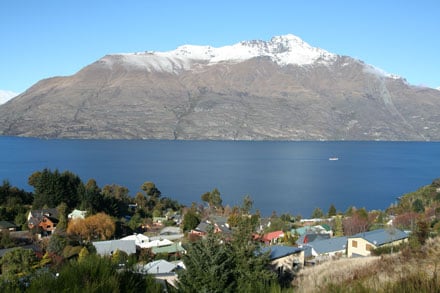 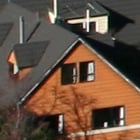 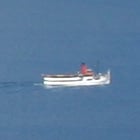 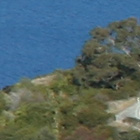 | ||||||
This landscape shot, taken at 21mm f8, proves the EF-S 17-55mm is perfectly suited to everyday photography. As the crops illustrate, the field is sharp and detailed across the frame.
Portrait: 2.03MB, Aperture Priority, 1/3200, f2.8, ISO 100, 17-55mm at 55mm (equivalent to 88mm)
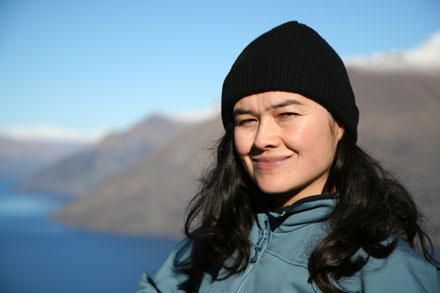  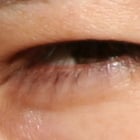  | ||||||
This example, taken with the lens zoomed-into 55mm and wide open at f2.8 is pin sharp at the point of focus and nicely blurred with a pleasing bokeh at the background.
Opened to f2.8 and zoomed-in, the depth-of-field is very small, as illustrated by the first crop where the sleeve is already out of focus.
Note: vignetting will be visible at f2.8, especially with backgrounds like this. See our labs results for more.
Macro: 2.04MB, Program, 1/6, f2.8, ISO 100, 17-55mm at 55mm (equivalent to 88mm)

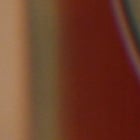
| ||||||
The image stabilisation features of the EF-S 17-55mm allow you to take shots under very dim conditions.
This macro shot was taken zoomed-in and as close as the lens could focus, but even at an exposure of 1/6, any camera shake has been eliminated.
Again with the aperture wide open, the lens enjoys a very small depth of field, as seen here by the edges of the bottle, already becoming soft.
Action: 3.04MB, Manual, 1/100, f2.8, ISO 1600, 17-55mm at 21mm (equivalent to 34mm)
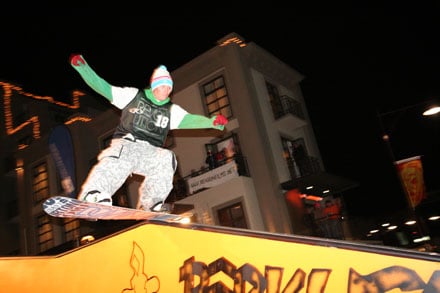

| ||||||
This photo of a snowboarder demanded the low-light benefits of the 17-55mm. Even with the 350D set to 1600 ISO there wasn’t enough light for a normal lens to deliver a balanced exposure with the popup flash.
By opening the 17-55mm to f2.8 though, there was sufficient light gathered to capture this shot with the popup flash. Note while the lens can focus quickly, we manually focused on a fixed point.
Also note the relatively low noise levels of the 350D even at its maximum of 1600 ISO.
Night: 3.38MB, Manual, 30 seconds, f2.8, ISO 1600, 17-55mm at 17mm (equivalent to 27mm)
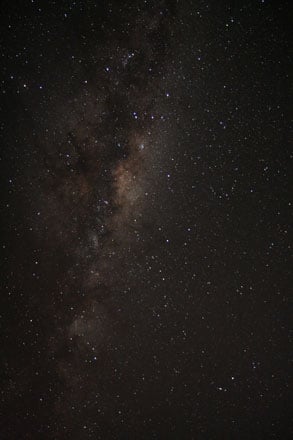 | 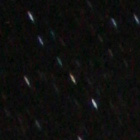 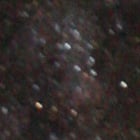 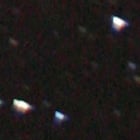 |
The bright f2.8 aperture of the 17-55mm will also appeal to astro-photographers with EF-S bodies. This 30 second exposure of the Southern Milky Way was taken with the lens zoomed-out to 17mm and with its aperture wide open. The 350D was set to 1600 ISO.
There’s some trailing due to the exposure time, but the stars are impressively sharp with only a little coma affecting bright points at the corners.

